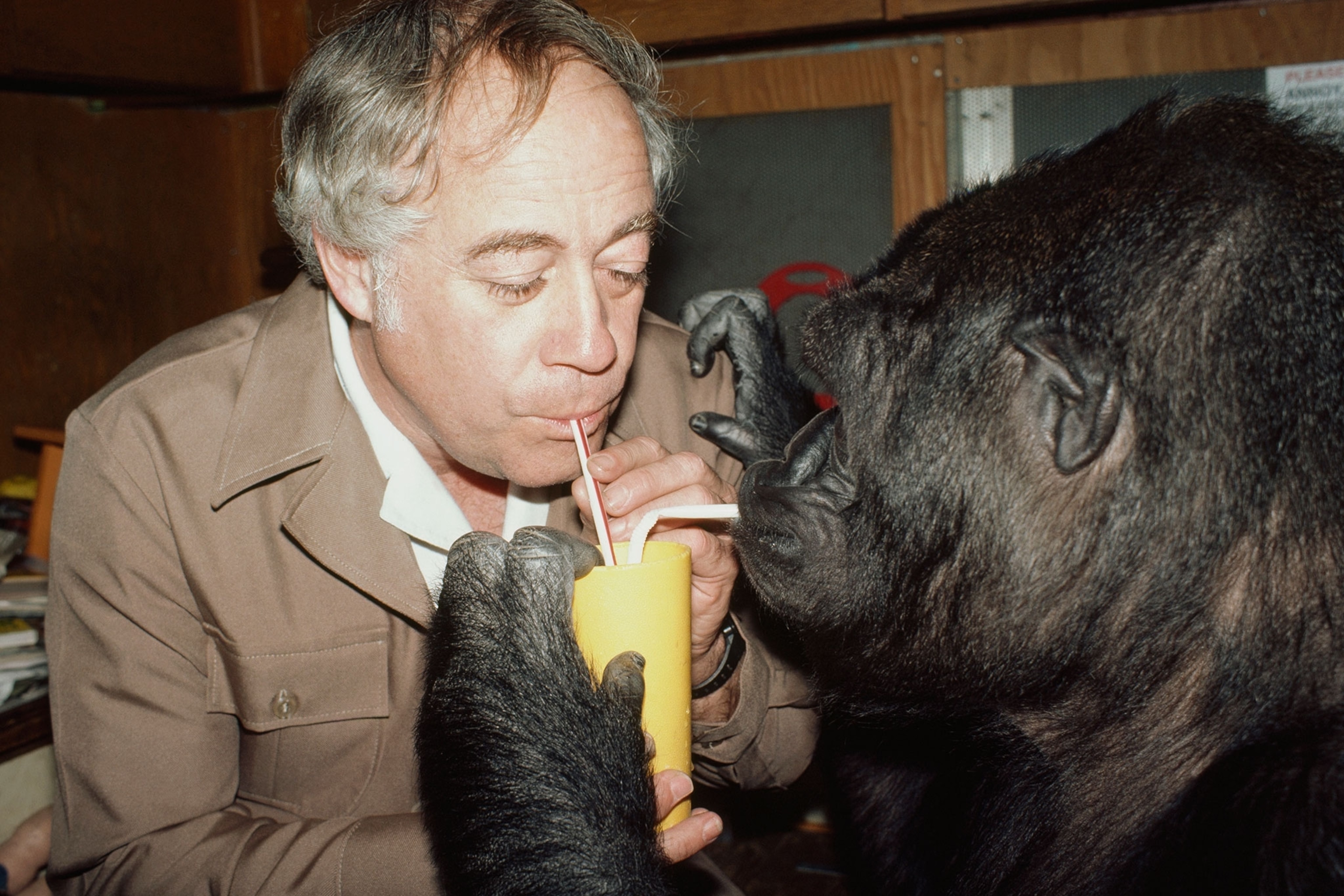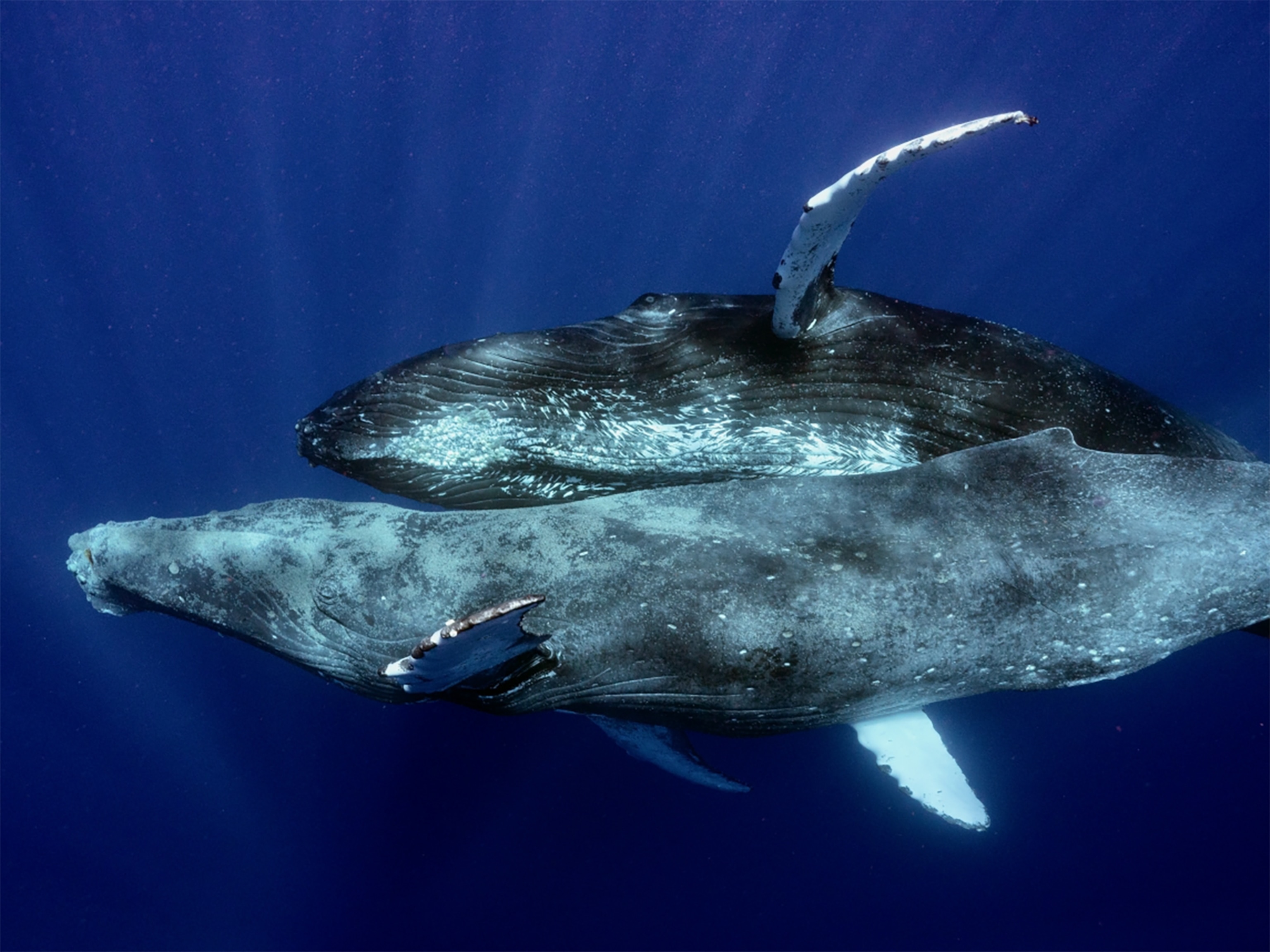





Why Koko the Gorilla Mattered
Featured twice on the cover of National Geographic magazine, Koko led to major revelations about animal empathy and communication.
Koko, the western lowland gorilla that died in her sleep Tuesday at age 46, was renowned for her emotional depth and ability to communicate in sign language.
She became an international celebrity during the course of her life, with a vocabulary of more than 1,000 signs and the ability to understand 2,000 words of spoken English, according to The Gorilla Foundation.
National Geographic magazine featured Koko of its cover twice: First in October 1978, with a photograph that she took of herself in a mirror (perhaps making it one of the earliest prominent animal selfies). She also appeared a second time on the cover in January 1985, in a story about Koko and her pet kitten.
Koko became the most visible member of her species, the western lowland gorilla (Gorilla gorilla gorilla), which is considered critically endangered by the International Union for Conservation of Nature.
“Because she was smart enough to comprehend and use aspects of our language, Koko could show us what all great apes are capable of: reasoning about their world, and loving and grieving the other beings to whom they become attached,” Barbara King, a professor emerita of anthropology at the College of William and Mary, says by email.
“Equally importantly, though, she raised our awareness of the costs to animal individuals of our scientific curiosity about other sentient lives,” says King, author of How Animals Grieve.
“Even as we celebrate her life, we must remember that Koko was made to live in confinement in a highly unnatural way from her infancy through her death.”
Pushing the Boundaries
Born July 4, 1971, Koko was born Hanabi-ko, Japanese for "fireworks child,” at the San Francisco Zoo. Researcher Francine Patterson began working with Koko in 1972, teaching her sign language.
She was later moved to Stanford, and soon thereafter Patterson and collaborator Ronald Cohn founded The Gorilla Foundation. In 1979 Koko moved along with the group to the Santa Cruz Mountains.
Research and work with Koko, and other gorillas, has revealed that great apes have language skills similar to small children. Anne Russon, a researcher at York University, said that teaching Koko and other animals sign language, as opposed to solely attempting verbal communication, was a “great leap forward.” (Read more about ape intelligence.)
In addition to language, Koko's behavior also revealed emotions similar to those of humans. (See stunning photos of gorillas.)
Amongst the many human-like traits that made Koko special was she seemed to have a sense of humor, and even a bit of playful mischievousness.

Cynthia Gorney, a contributing writer for National Geographic, interviewed Koko in 1985. At first, Koko did not seem to warm to Gorney, calling her a toilet via sign language. As Gorney recalls, Patterson reprimanded her, saying, “Koko! That is not nice."
But Koko warmed to her interviewer quickly, and when Gorney asked Koko where gorillas go when they die, she signed, “Comfortable hole bye."
Besides her National Geographic covers, Koko appeared in several documentaries, and famously interacted with actor Robin Williams in a 2001 video, in which she played with Williams and tried on his glasses.
The Gorilla Foundation said it a statement that it “will continue to honor Koko’s legacy and advance our mission” by studying sign language in great apes and pursuing conservation projects in Africa and elsewhere.
Related Topics
You May Also Like
Go Further
Animals
- This ‘saber-toothed’ salmon wasn’t quite what we thoughtThis ‘saber-toothed’ salmon wasn’t quite what we thought
- Why this rhino-zebra friendship makes perfect senseWhy this rhino-zebra friendship makes perfect sense
- When did bioluminescence evolve? It’s older than we thought.When did bioluminescence evolve? It’s older than we thought.
- Soy, skim … spider. Are any of these technically milk?Soy, skim … spider. Are any of these technically milk?
- This pristine piece of the Amazon shows nature’s resilienceThis pristine piece of the Amazon shows nature’s resilience
Environment
- This pristine piece of the Amazon shows nature’s resilienceThis pristine piece of the Amazon shows nature’s resilience
- Listen to 30 years of climate change transformed into haunting musicListen to 30 years of climate change transformed into haunting music
- This ancient society tried to stop El Niño—with child sacrificeThis ancient society tried to stop El Niño—with child sacrifice
- U.S. plans to clean its drinking water. What does that mean?U.S. plans to clean its drinking water. What does that mean?
History & Culture
- Meet the original members of the tortured poets departmentMeet the original members of the tortured poets department
- Séances at the White House? Why these first ladies turned to the occultSéances at the White House? Why these first ladies turned to the occult
- Gambling is everywhere now. When is that a problem?Gambling is everywhere now. When is that a problem?
- Beauty is pain—at least it was in 17th-century SpainBeauty is pain—at least it was in 17th-century Spain
- The real spies who inspired ‘The Ministry of Ungentlemanly Warfare’The real spies who inspired ‘The Ministry of Ungentlemanly Warfare’
Science
- Here's how astronomers found one of the rarest phenomenons in spaceHere's how astronomers found one of the rarest phenomenons in space
- Not an extrovert or introvert? There’s a word for that.Not an extrovert or introvert? There’s a word for that.
- NASA has a plan to clean up space junk—but is going green enough?NASA has a plan to clean up space junk—but is going green enough?
- Soy, skim … spider. Are any of these technically milk?Soy, skim … spider. Are any of these technically milk?
Travel
- What it's like to hike the Camino del Mayab in MexicoWhat it's like to hike the Camino del Mayab in Mexico
- Is this small English town Yorkshire's culinary capital?Is this small English town Yorkshire's culinary capital?
- This chef is taking Indian cuisine in a bold new directionThis chef is taking Indian cuisine in a bold new direction




